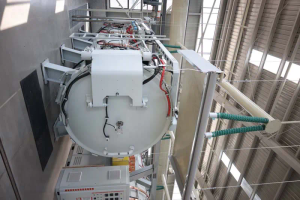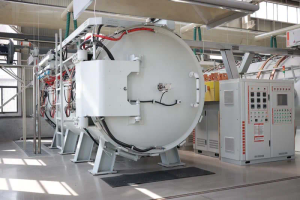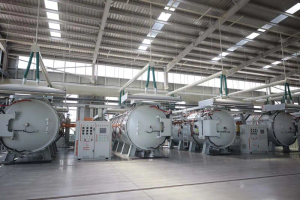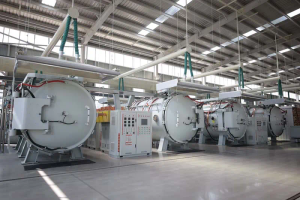Silicon-Carbide Crucible HS Codes- A Key Guide to Importing and Exporting
Silicon-Carbide Crucible HS Codes: A Key Guide to Importing and Exporting
Silicon-carbide crucibles are essential components in various industries, particularly in metallurgy, ceramics, and high-temperature processes. These crucibles are used to hold and melt materials at very high temperatures, typically exceeding 2000°C. Given their specialized use, understanding the HS (Harmonized System) codes associated with these products is crucial for businesses involved in the import and export of such goods. This article delves into the details of Silicon-Carbide Crucible HS codes, providing a comprehensive guide for manufacturers, traders, and logistics professionals to navigate the complexities of global trade.
What Are Silicon-Carbide Crucibles?
Silicon-carbide crucibles are a specific type of crucible made from silicon carbide (SiC), a material known for its high thermal conductivity, resistance to thermal shock, and ability to withstand extreme temperatures. They are primarily used in the melting and casting of metals and alloys, including non-ferrous metals, such as aluminum, and in high-temperature laboratory applications. Silicon carbide crucibles are also found in various other industries, including semiconductor manufacturing, where their ability to withstand harsh environments is valued.
These crucibles are made through a specialized process of mixing silicon carbide powder with binders, followed by sintering at high temperatures. The resulting product is known for its durability and longevity, making it an ideal choice for industries requiring repeated use in extreme conditions.
Understanding the HS Code System
The Harmonized System (HS) is an international standardized system of names and numbers used to classify traded products. The HS system is maintained by the World Customs Organization (WCO) and is used by over 200 countries for customs declarations and international trade purposes. The system helps streamline international trade by categorizing products in a way that is universally understood across borders.
The HS code system is structured as a six-digit code that classifies goods in increasing levels of detail. The first two digits represent the broader category of the product, the next two digits refine the category, and the last two digits provide further specification.
Silicon-Carbide Crucibles and Their HS Codes
When it comes to importing and exporting silicon-carbide crucibles, it is essential to identify the correct HS code. Silicon-carbide crucibles typically fall under specific headings in the HS system that deal with ceramic products or refractory materials.
1. HS Code for Refractory Products (6903)
Silicon-carbide crucibles are usually classified under the broader category of “Refractory Ceramic Products,” which is identified by HS Code 6903. This category encompasses a wide range of products designed to withstand high temperatures, including crucibles, bricks, and other materials used in industrial furnaces, kilns, and reactors.
2. Further Breakdown of HS Code 6903
The HS Code 6903 can be further detailed based on the specific use and material composition of the product. Silicon-carbide-based crucibles typically fall under subcategories that differentiate them from other types of refractory ceramics. The key to identifying the right subcategory lies in the precise composition of the crucible and the intended use.
For example, a typical classification for silicon-carbide crucibles might fall under subheading 6903.20, which specifically deals with ceramic products made of silicon carbide.
3. HS Code for Other Materials
It is worth noting that some crucibles made from composite materials or other combinations of metals and ceramics may fall under different HS codes. For example, a crucible made primarily from a non-silicon carbide material may fall under a separate category, such as HS Code 7615, which includes “Other articles of aluminum.”
![]()
4. Regional and National Variations in Classification
While the HS system provides a standardized way of classifying goods, certain countries or regions may have additional silicon carbide crucible diy subcategories or variations based on local practices or additional regulations. Importers and exporters must ensure they are familiar with the specific requirements of the countries they are trading with.
How to Find the Correct HS Code for Silicon-Carbide Crucibles
Finding the correct HS code for silicon-carbide crucibles involves several steps:
1. Product Identification
The first step is to ensure you understand the exact nature of the product. Is it made from pure silicon carbide, or is it a composite material? What is its intended use (e.g., melting, casting, laboratory work)? Identifying these details will help in narrowing down the correct HS code.
2. Consulting National Customs Authorities
Each country has its own customs authority responsible for providing accurate HS classifications. If there is any uncertainty regarding the correct HS code, contacting the customs authorities or a professional customs broker can provide clarity.
3. Reviewing International Trade Documentation
Many international trade databases and resources, such as the WCO’s database or the Harmonized Tariff Schedule (HTS), offer detailed listings of HS codes for specific products. Reviewing these resources can help ensure that you are using the correct code.
4. Using Customs Brokers
Customs brokers are professionals who specialize in the import and export process, including classification of goods under the HS code system. These experts can help navigate the complexities of international trade and ensure compliance with local regulations.
Why HS Codes Matter for Importing and Exporting Silicon-Carbide Crucibles
1. Customs Clearance
HS codes are critical for customs clearance. When you import or export silicon-carbide crucibles, the correct HS code ensures that the goods pass through customs smoothly. Incorrect HS codes can lead to delays, fines, or even the seizure of goods.
2. Tariff and Duty Rates
Different HS codes may be subject to different tariff rates. By identifying the correct code, importers and exporters can ensure that they are paying the correct amount of duties and taxes. Incorrectly classifying a product could lead to overpayment or underpayment of duties.
3. Trade Agreements
Many countries have trade agreements that provide reduced tariffs or preferential treatment for certain types of products. By correctly classifying your silicon-carbide crucibles, you can take advantage of these agreements and potentially reduce the cost of importing or exporting.
4. International Shipping
Shipping logistics also rely on HS codes to determine the best routes, appropriate containers, and the necessary handling procedures. Properly identifying your product ensures that shipping companies can handle it correctly and efficiently.
Challenges in Classifying Silicon-Carbide Crucibles
1. Material Complexity
Silicon-carbide crucibles can be made in various forms, with some containing other materials like graphite or metals. This can complicate the classification process, as composite materials may fall under different HS codes than pure silicon-carbide products.
2. Product Variations
The size, shape, and intended use of the crucible can affect its classification. A small laboratory crucible may be classified differently from a large industrial crucible used in a foundry. Ensuring the classification is accurate requires careful attention to these details.
3. Regional Differences
Different countries may interpret the HS codes slightly differently, especially for products like silicon-carbide crucibles, which may fall under different subcategories depending on local regulations. This means that exporters and importers need to be well-versed in the customs practices of the countries they trade with.
4. Changes in the HS Code System
The HS code system is updated periodically to reflect changes in trade patterns and product innovations. Importers and exporters need to stay informed about any changes in the classification of products like silicon-carbide crucibles to avoid any issues with customs or tariffs.
![]()
Best Practices for Importing and Exporting Silicon-Carbide Crucibles
1. Document Everything
When trading silicon-carbide crucibles internationally, always keep detailed records of product specifications, material compositions, and intended uses. This will help when determining the correct HS code and will serve as important documentation in the event of a customs inspection.
2. Stay Informed on Trade Regulations
Since trade regulations and tariff schedules can change, it’s essential to stay updated on any changes that may affect the import or export of silicon-carbide crucibles. Subscribe to trade newsletters or consult with a customs broker regularly.
3. Work with Professionals
Engage professionals who specialize in international trade, such as customs brokers or freight forwarders. These experts can help ensure that all documents are in order, the right HS code is used, and the trade process goes smoothly.
4. Check for Compliance with Standards
In addition to HS codes, silicon-carbide crucibles may need to meet specific international or regional standards, especially if they are used in critical industrial processes. Verify that your products comply with any required certifications or standards, such as ISO or ASTM, to prevent delays at customs.
Conclusion
Silicon-carbide crucibles are specialized products that require careful consideration when being imported or exported. Understanding the correct HS code for these products is crucial to ensure smooth customs clearance, avoid unnecessary tariffs, and comply with international trade regulations. By following the best practices outlined in this guide, businesses can navigate the complexities of international trade with confidence, ensuring that their silicon-carbide crucibles are properly classified and handled during the import and export process.
https://oaicon.com/



